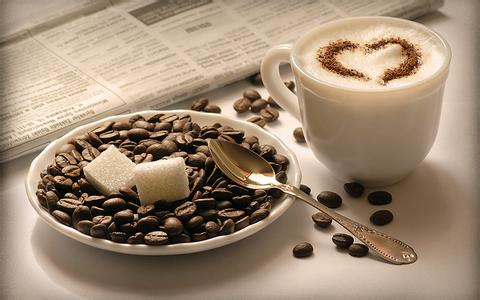The method of determining the freshness of coffee beans coffee common sense

There are three steps: smell, see, and peel.
Smell: put the coffee beans close to the nose and smell them deeply to see if you can clearly smell the aroma of the coffee beans. If so, the coffee beans are fresh enough. On the contrary, if the aroma is weak, or has begun to appear greasy, it means that the coffee beans are not fresh at all.
No matter how much effort you put into grinding and cooking such coffee beans, it is impossible to make a good cup of coffee.
Look: spread the coffee beans on your hands, determine the origin and variety of coffee beans, and determine whether the coffee beans are roasted evenly.
Peel: take a coffee bean and try to peel it off by hand. if the coffee bean is fresh enough, it should be easy to pull away, and it will have a crisp sound and feeling. If the coffee beans are not fresh, you will find that you have to work hard to get rid of a bean.
Another important point to observe when peeling off the coffee beans is to see if the firepower is uniform when baking. If it is uniform, the outer skin and inner layer of the beans should be the same color.
If the color of the surface layer is obviously much darker than that of the inner layer, it means that there may be too much firepower during baking, which will also affect the aroma and flavor of coffee beans.
Important Notice :
前街咖啡 FrontStreet Coffee has moved to new addredd:
FrontStreet Coffee Address: 315,Donghua East Road,GuangZhou
Tel:020 38364473
- Prev

What is the safe intake of caffeine?
Coffee is an indispensable drink for Westerners in life, whether it is waking up in the morning to awaken the sleeping soul, refreshing at work or the leisure of afternoon tea. Because of the natural ingredients found in the leaves, seeds or flesh of more than 60 plants, such as coffee beans, cocoa beans, cola beans and tea, the most common food sources are coffee, tea and Qiao.
- Next

The difference between the taste of large and small coffee beans
For the same kind of coffee, the bigger the bean, the higher the grade, the smaller the bean, the lower the grade, and the cheaper it is. Of course, there are differences in taste. The bigger the beans, the stronger the coffee. However, in addition to high-grade products, the classification of other coffee is not very strict, for example, the central grade beans can account for 60%. Then beans that are one level higher than this level and beans that are smaller will each have two at the same time.
Related
- Beginners will see the "Coffee pull flower" guide!
- What is the difference between ice blog purified milk and ordinary milk coffee?
- Why is the Philippines the largest producer of crops in Liberia?
- For coffee extraction, should the fine powder be retained?
- How does extracted espresso fill pressed powder? How much strength does it take to press the powder?
- How to make jasmine cold extract coffee? Is the jasmine + latte good?
- Will this little toy really make the coffee taste better? How does Lily Drip affect coffee extraction?
- Will the action of slapping the filter cup also affect coffee extraction?
- What's the difference between powder-to-water ratio and powder-to-liquid ratio?
- What is the Ethiopian local species? What does it have to do with Heirloom native species?

